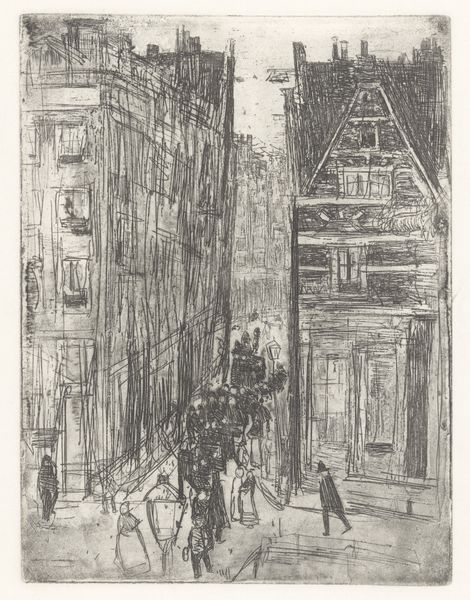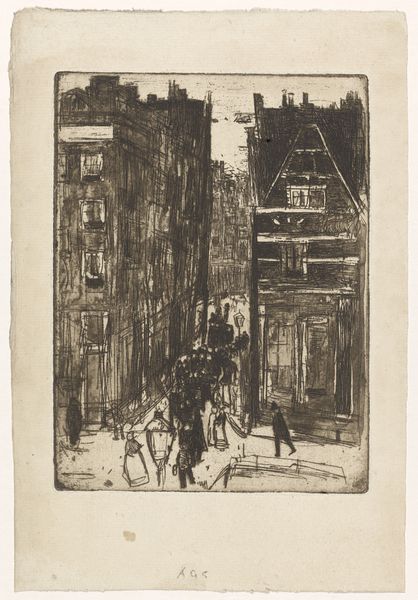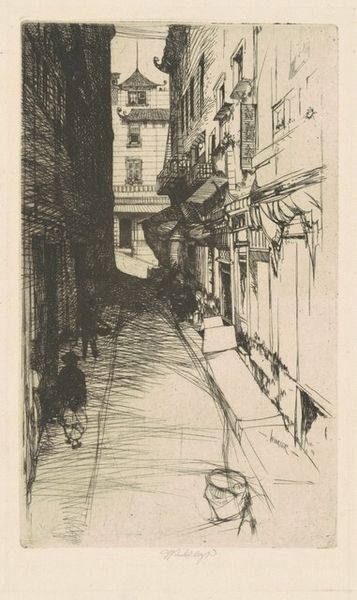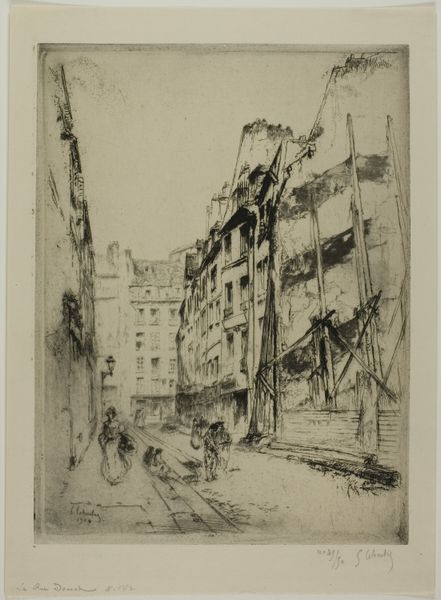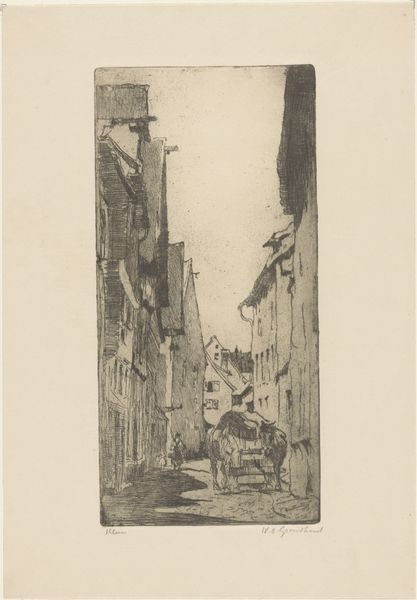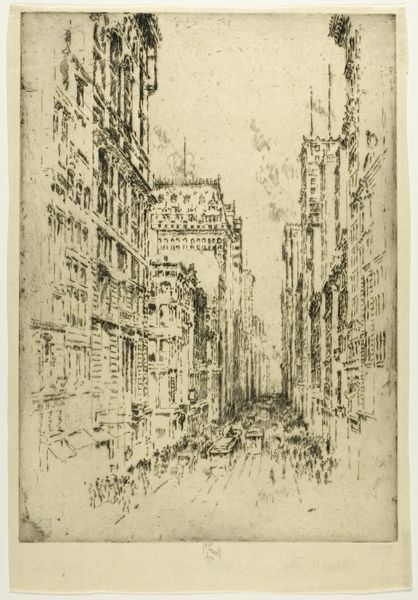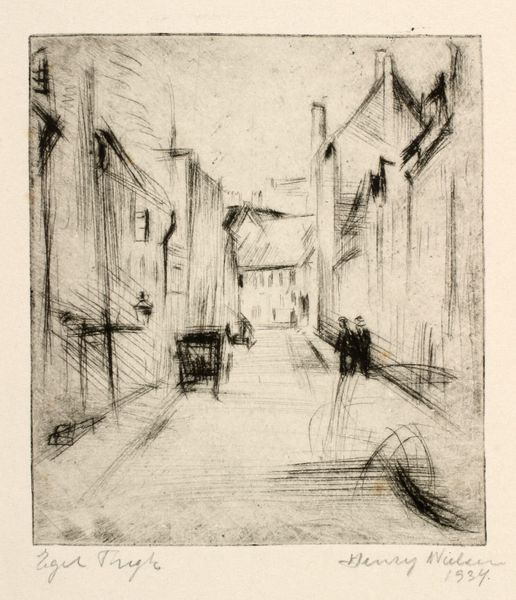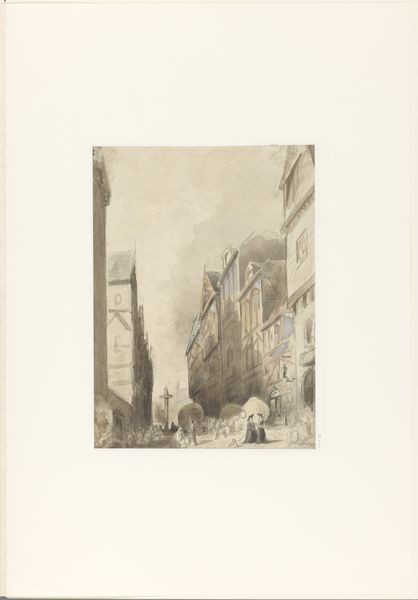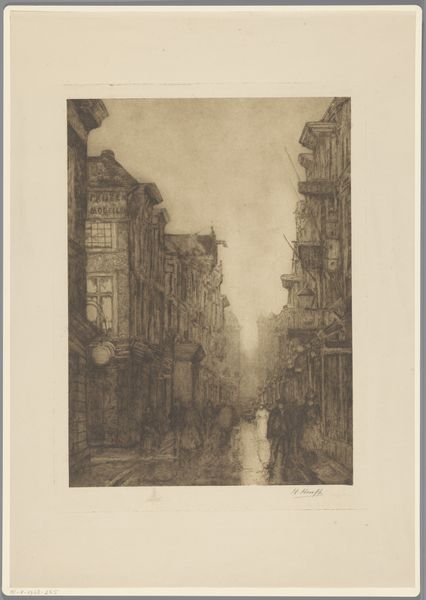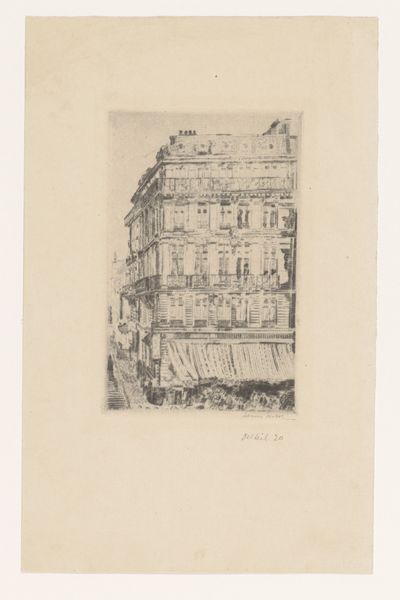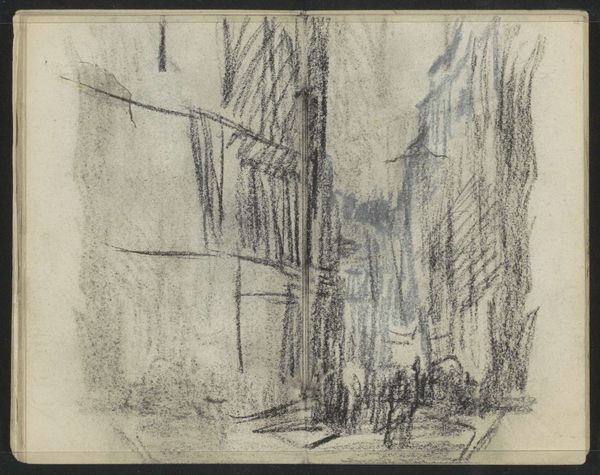
Dimensions: height 200 mm, width 150 mm
Copyright: Rijks Museum: Open Domain
Editor: Here we have Isaac Israels' "Gasthuismolensteeg in Amsterdam," created around 1894. It's an etching, giving it this wonderful, almost gritty feel. What strikes me is how dark it is, yet the street scene feels so alive. What do you make of it? Curator: The means of production is key here. Israels chose etching, a process involving acid, metal plates, and intense labor. Why this particular method to depict this cityscape? Consider the industrial growth of Amsterdam at the time. Editor: So, you think the choice of etching itself reflects the changing urban landscape? Curator: Precisely! The harsh lines and the darkness you mentioned weren’t just aesthetic choices. Etching, as a process, allowed him to depict the textures and the somewhat gritty realities of the quickly urbanizing city, its materials, its labor. Editor: I see what you mean. It’s not just a pretty picture, but also a record of industrial advancement. Curator: It's an engagement with the means and material reality of urban life and a democratizing force that can mass produce these types of pieces of art, as prints become increasingly in demand and are distributed on a wider scale for the general population. What kind of consumer is buying and investing in this artform? Editor: That's a really interesting point, how art also is reflective of consumer demands and production. I'd never considered the role of the process itself as such an integral part of the meaning. Curator: Considering the artist's decision and manual skills alongside the city's societal changes enriches the artwork with even more meaning!
Comments
No comments
Be the first to comment and join the conversation on the ultimate creative platform.
